- Undergraduate
Bachelor's Degrees
Bachelor of ArtsBachelor of EngineeringDual-Degree ProgramUndergraduate AdmissionsUndergraduate Experience
- Graduate
Graduate Experience
- Research
- Entrepreneurship
- Community
- About
-
Search
Research Quick Takes
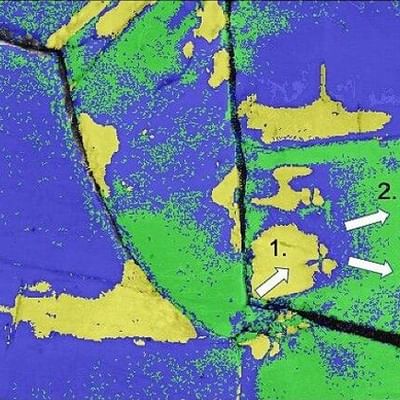
Oct 05, 2023
Advancing Sustainable Magnets
The Baker and Hautier research groups co-authored, "The phase transformation behavior of Mn-Al rare-earth-free permanent magnets" published in the Journal of Magnetism and Magnetic Materials. Authors include PhD students Thomas Keller and Dylan Barbagallo, and postdocs Tushar Ghosh and Natalya Sheremetyeva, along with professors Geoffroy Hautier and Ian Baker. The study presents an "alternative to high-performance rare-earth permanent magnets for use in electric motors and devices."

Sep 21, 2023
Advancing Materials Science
New publications from the Hautier Research Group include "First-principles study of intrinsic and hydrogen point defects in the earth-abundant photovoltaic absorber Zn3P2" published in Journal of Materials Chemistry A and authored by postdoc researchers Zhenkun Yuan and Yihuang Xiong, and Professor Geoffroy Hautier. Xiong and Hautier are also co-authors of "Strong electron-phonon coupling driven pseudogap modulation and density-wave fluctuations in a correlated polar metal" published in Nature Communications.

Sep 21, 2023
Prouty Pilot Research Projects
Dartmouth's Center for Imaging Medicine received two $60,000 grants for Prouty Pilot Research Projects: (1) Professors Petr Brůža and David Gladstone, along with PhD student Roman Vasyltsiv and co-PI Lesley Jarvis from the Dept of Radiation Oncology, will analyze Cherenkov light emissions to identify response variations between normal and abnormal tissue; and (2) researcher Arthur Petusseau Th'23 will work with Brůža and co-PI Shane Chapman from the Dept of Dermatology on an advanced imaging system for the early detection of malignant skin lesions, and for guided surgical resection of non-melanoma skin cancer.

Sep 14, 2023
En Route to Better Batteries
PhD student Peiyu Wang, Professor Weiyang (Fiona) Li, and researchers from Stanford University are authors of "High-Performance Lithium−Sulfur Batteries via Molecular Complexation," published in the Journal of the American Chemical Society. This study presents a new route to design and tailor liquid-sulfur-based cathodes with excellent solubilities of solid discharge products to greatly improve the reversibility, stability, cycling performance, and low-temperature capabilities of Li−S batteries.
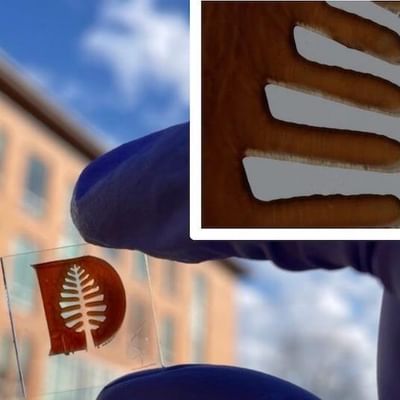
Sep 14, 2023
Printing Solar Cells
PhD student Julia Huddy and Professor William Scheideler co-authored "Rapid 2D Patterning of High-Performance Perovskites Using Large Area Flexography" published in Advanced Functional Materials. The study leverages high-speed flexographic printing to deposit critical materials for perovskite solar cells over large areas, creating a scalable method for manufacturing and future commercialization.

Sep 14, 2023
Best Paper Award
PhD student Michele Maxson was invited to present her work with professor Fridon Shubitidze entitled, "Active Bucking Using a System On a Chip Field Programmable Gate Array for Geophysical Investigations" at the Near Surface Geoscience conference in Edinburgh, Scotland last week. The invitation came as part of a "best paper" award earlier this year at the 35th Symposium on the Application of Geophysics to Engineering and Environmental Problems in New Orleans.

Sep 07, 2023
Best Abstract Award
PhD student Megan Clark won "best abstract" for her work to be presented at the Flash Radiotherapy and Particle Therapy (FRPT) conference this December in Toronto. Her work is titled, "High-speed Quantitative Imaging for Retrospective Quality Assurance FAST-01 Clinical Treatment Fields." This novel technology, developed at Dartmouth, can image scanning proton beams at up to 12 kHz and verify that therapeutic beams are delivered as planned.

Sep 07, 2023
Wellness in Med School
Professor Wesley Marrero will co-lead a project funded by the American Medical Association's ChangeMedEd Innovation Grant Program, which adopts the holistic "Precision Well-Being" approach to create personalized wellness solutions for optimal learning and wellness in medical school. The team includes Thayer PhD student Zequn Chen, Geisel professors Thomas Thesen and Matthew Duncan, and LeChauncy Woodard at the University of Houston College of Medicine.
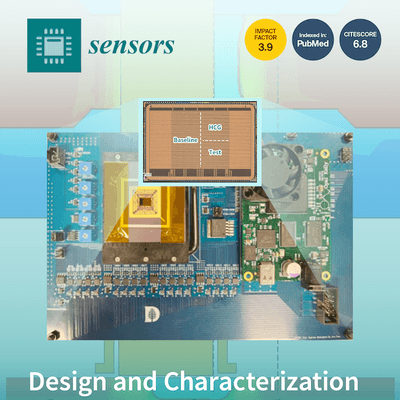
Sep 07, 2023
On the Cover
PhD candidate Xin Yue was featured on the (virtual) cover of Sensors in July for his work on a 20 million frames-per-second image sensor that can capture 108 sequential image frames over a period of 5.4 microseconds in burst mode. The sensor was designed and tested by Dartmouth for the Los Alamos National Laboratory for ultra-high-speed materials analysis. Yue, who recently completed his dissertation, is working for Apple in California.
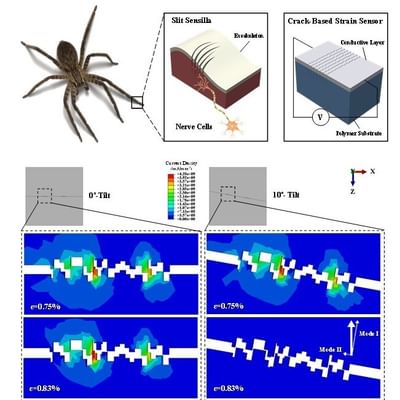
Aug 24, 2023
Spidey-Sensors
PhD students Huan Zhao and Xiangbei Liu, and Professor Yan Li co-authored "The Role of Fracture Patterns on Crack-Based Strain Sensors" published in the Journal of Engineering Materials and Technology. Taking inspiration from the vibration detection mechanism employed by spiders, this computational study provides physical insights for the design and manufacturing of crack-based strain sensors across various applications.

Aug 24, 2023
Early Career Runner-Up
PhD student Savannah Decker won 2nd place at the 2023 Early-Career Investigator Symposium of the American Association of Physicists in Medicine in Houston, TX. Her submission, "Expanding the inclusivity of Cherenkov surface dosimetry by quantifying the effects of skin tone in a multi-institutional human study," was one of 10 chosen from the hundreds submitted for oral presentation in the competition.
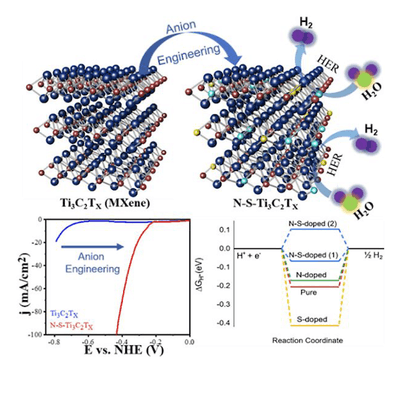
Aug 10, 2023
2D Materials for H2 Production
Postdoc Anand Tiwari, PhD students Shay McBride, Andrew Hamlin, Md Saifur Rahman, and Julia Huddy, and professors Geoffroy Hautier, and William Scheideler are co-authors of a study on designing 2D titanium carbide materials for hydrogen (H2) production. Published in ACS Sustainable Chemistry and Engineering, the study developed strategies to dope 2D MXenes with sulfur and nitrogen to engineer their activity as efficient—as well as low-cost and earth-abundant—electrocatalysts for large-scale H2 production.
